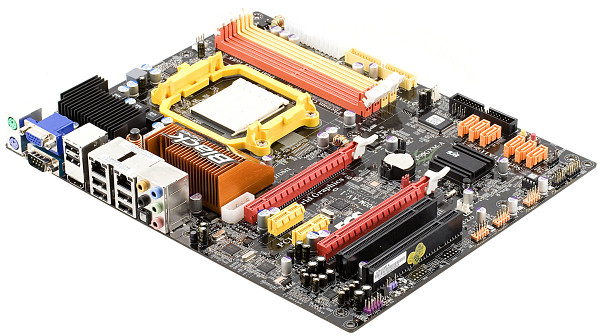ECS A790GXM-A Motherboard
|
What is better, an inexpensive model from a company that offers a complete range of products, including those High-End models for over $300, or a relatively expensive well-rigged model from a manufacturer that specializes in Low-End? On the one hand, large (and lazier) companies often don't have a motive to work thoroughly on quality and other product properties, especially in market segments that do not promise high profits. For example, ASUS published a lot of reports, in which motherboards were not the main source of income at all (it's notebooks), even though this company can boast of the widest range of gaming motherboards with extraordinary features and prices. However, despite these reports, ASUS remains the largest motherboard supplier and releases mainstream models on all new chipsets.
On the other hand, companies with lower profits can rig up their expensive models (expensive in their own terms) even better than equally-priced Mid-End products from established manufacturers (who may already be disappointed with the given market segment already) just to make it out of Low-End. ECS positions its Black Series motherboards in this very way. So let's see what we've got this time.
 
This motherboard has a traditional layout for full-sized ATX models. ECS decided against narrowing the board, so all slots and connectors are arranged very conveniently. However, a long double-slot graphics card, installed as a second card in CrossFire, may block the on/off buttons and several SATA ports. On the other hand, this motherboard will hardly suit hardcore gamers. Besides, on-board buttons are necessary only when you assemble and test your computer. After that even the most weird people use buttons on a PC enclosure to power on/off and reset. There are two PCIEx1 ports between the graphics ports, that's good. This layout must become a standard for motherboards with two graphics ports, as CrossFire is often built with powerful cards with two-slot cooling systems. If the second card is installed close to the first, it may grow hotter, as the cooler has no access to fresh air. But the main option that distinguishes this motherboard from its competitors is two gigabit network controllers, which is a rare feature these days.

A compact heatsink on the Northbridge is installed very conveniently relative to the CPU socket: even a boxed cooler can help cool the chipset. The heatsink remains warm even during stress tests. However, you'd better remove the sticker from the angled surface of the heatsink -- it interferes with the airflow. The heatsink does not cover a memory chip for the integrated graphics core (128 MB DDR2-667 Qimonda HYB18T1G160BF-3S). So it's up to overclockers to install a compact heatsink to it. You must be very careful, if you have to remove the heatsink: it has very sharp edges near the knobs.
The 5-phase switching voltage regulator of the processor incorporates four field-effect transistors per channel in all phases, 10 x 820 uF and 5 x 270 uF solid-state capacitors. They are not elite components, but this power circuit produces only positive impressions. Field-effect transistors come with a heatsink to improve their operating conditions. There is a thermal gasket between them and the heatsink, and judging by chip imprints, the contact is tight. There are no empty seats on the board, because it's the only model from ECS on this chipset. Motherboard dimensions -- 305x245 mm (full-size ATX, nine-screw mount, all edges of the board are fixed.
Write a comment below. No registration needed!
|
|
 |
|
|
|
